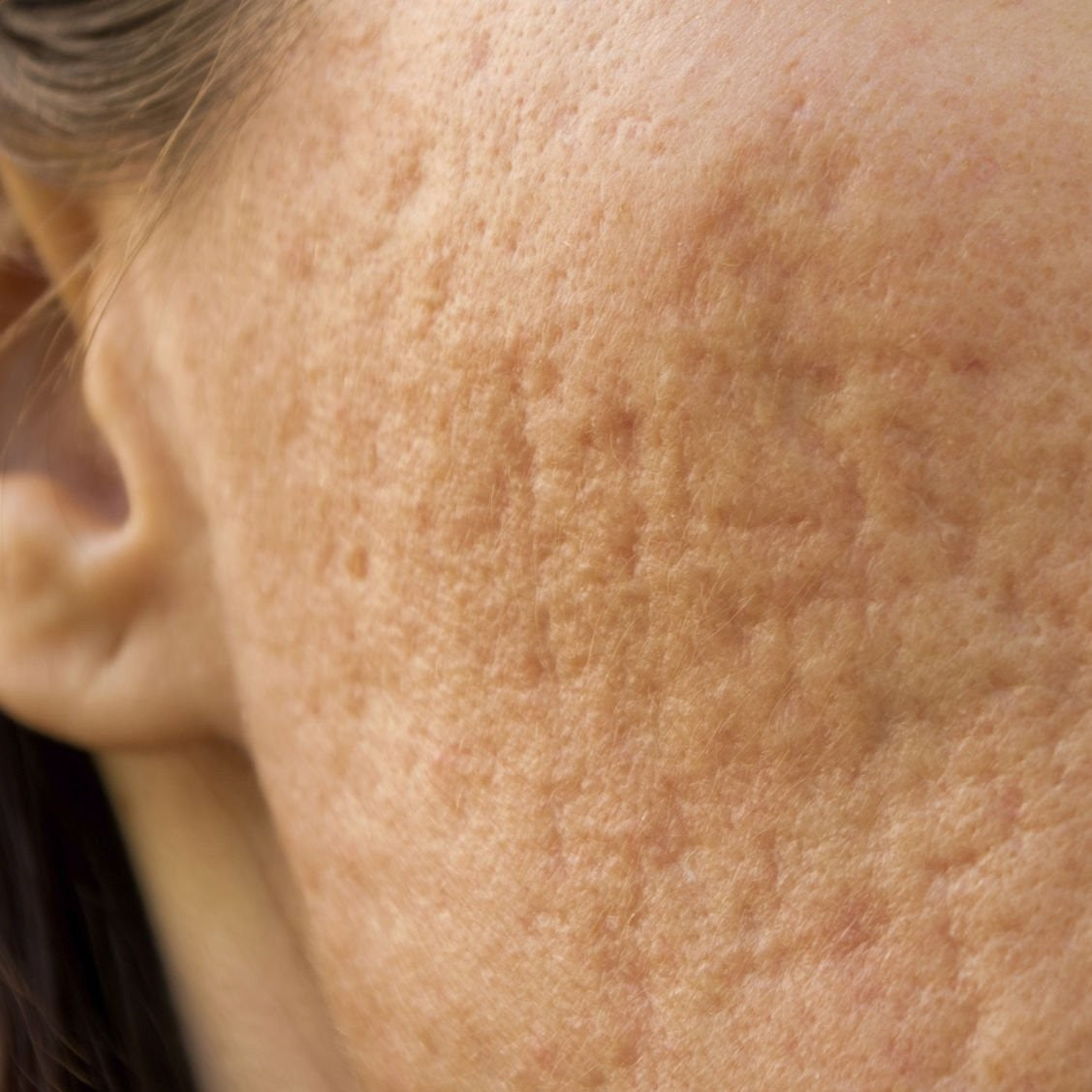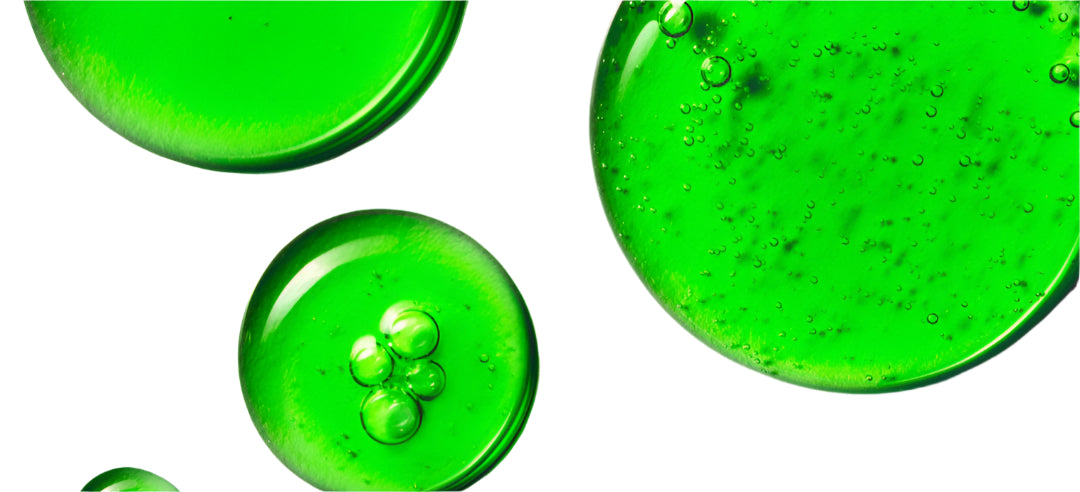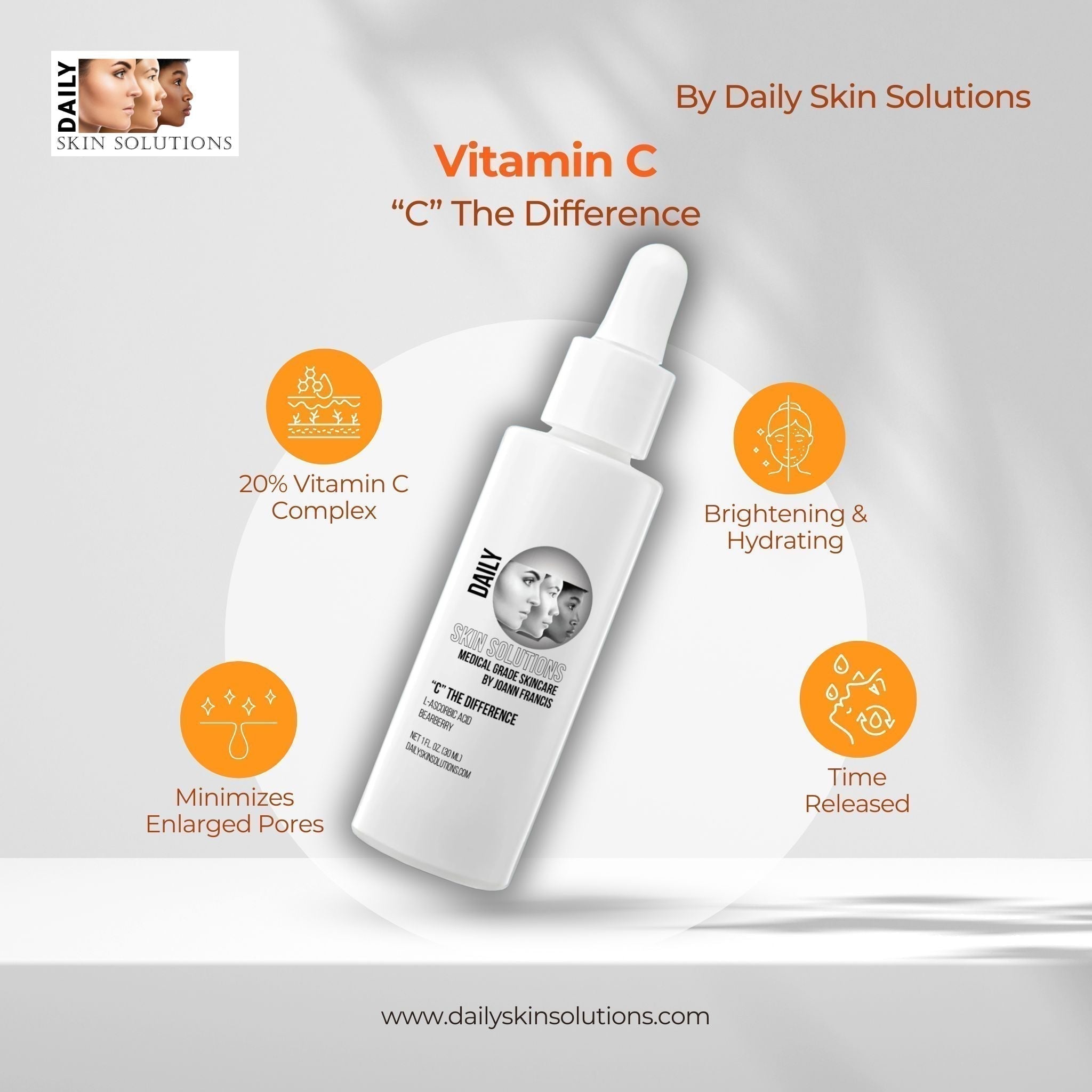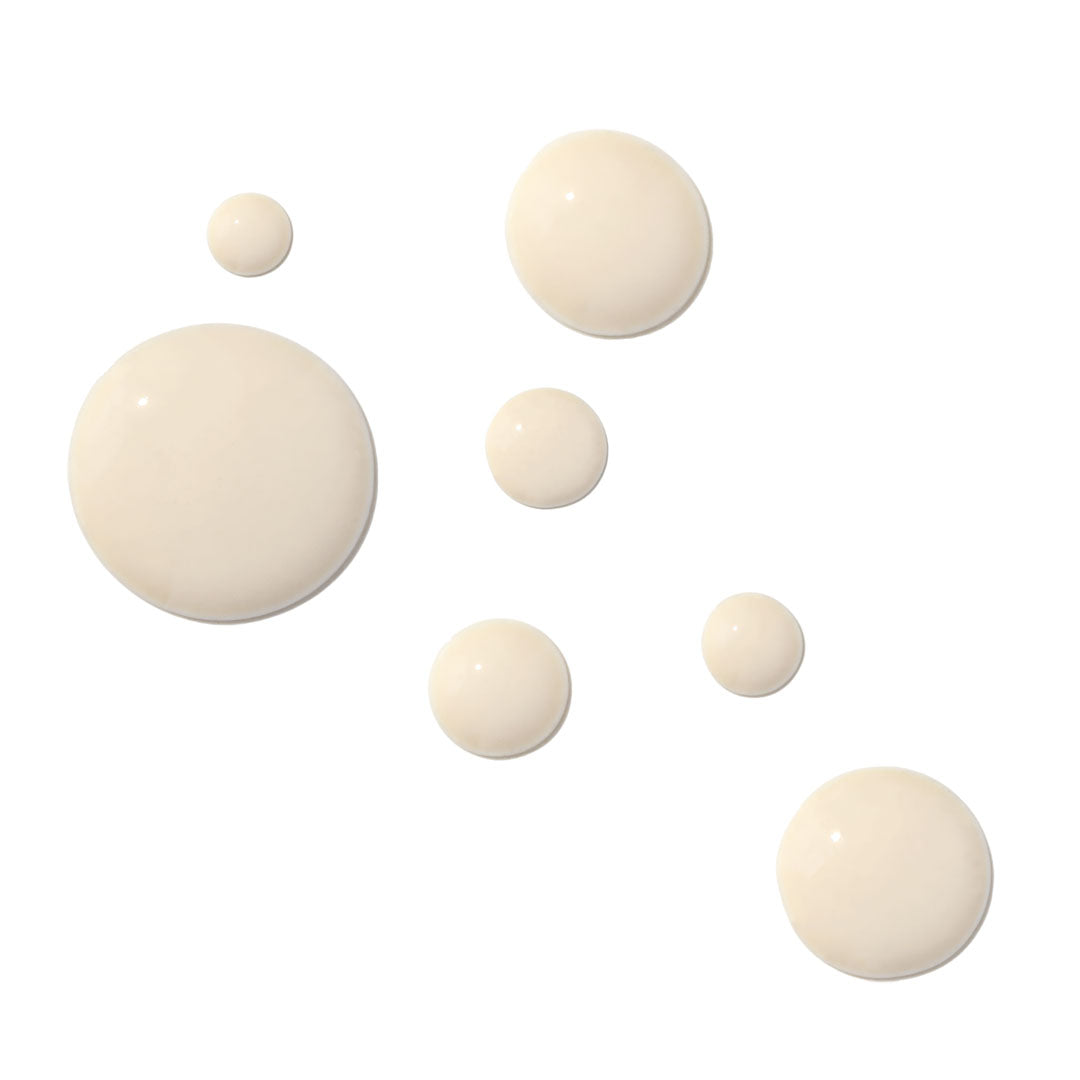How to Treat Acne Scarring: Professional Skincare Solutions That Actually Work

Acne Scarring: Causes, Types, and How to Treat It with Professional-Grade Skincare
By JoAnn Francis | Daily Skin Solutions
Acne is frustrating on its own—but the scars it leaves behind can linger long after breakouts have cleared. Whether you're a skincare professional or someone seeking long-term skin clarity, understanding acne scarring is essential to selecting the right treatment strategy.
In this blog, we’ll break down the science of acne scars, the different types, why drugstore products often fall short, and how professional-grade ingredients can significantly improve skin texture, tone, and confidence.
What Causes Acne Scarring?
Acne scarring is the result of inflamed blemishes damaging the skin’s tissue. When a breakout penetrates deeply into the skin, it can disrupt the dermis, which is where collagen, elastin, and other structural proteins reside. The skin tries to repair itself, but the repair process isn’t always perfect. If too little collagen is produced, a depression or "atrophic" scar forms. If too much collagen is produced, you get a raised or "hypertrophic" scar.
Factors That Contribute to Acne Scarring:
-
Inflammation: The deeper and more inflamed the breakout, the more likely it will leave a scar.
-
Picking or popping pimples: This damages tissue further and interferes with natural healing.
-
Genetics: Some people are simply more prone to scarring.
-
Delayed treatment: Allowing acne to progress without intervention increases scarring risk.
Types of Acne Scars
Understanding the different types of acne scars is crucial when choosing a treatment plan.
1. Atrophic (Depressed) Scars
These are the most common acne scars and appear as indents in the skin.
-
Ice Pick Scars: Deep and narrow scars that look like tiny holes.
-
Boxcar Scars: Broad, defined edges with a box-like appearance.
-
Rolling Scars: Wavy, uneven skin texture caused by damage beneath the surface.
2. Hypertrophic and Keloid Scars
These are raised scars caused by an overproduction of collagen. They're more common on the chest, back, and jawline.
3. Post-Inflammatory Hyperpigmentation (PIH) and Post-Inflammatory Erythema (PIE)
While not true scars, these dark spots or red marks are common after acne heals. They're easier to treat but can be mistaken for permanent damage.
Why Over-the-Counter Solutions Often Fall Short
OTC acne scar treatments are usually diluted for mass safety and lack the clinical strength required to remodel the skin. Many also skip key steps in preparation, such as barrier repair and hydration, which are essential for getting results from corrective actives.
Most drugstore brands focus on masking discoloration or giving temporary smoothness with silicones, rather than driving real cellular turnover or collagen synthesis.
The Professional Approach to Treating Acne Scars
Professional-grade skincare, like what we offer at Daily Skin Solutions, goes beyond surface-level improvement. It focuses on repairing the skin barrier, stimulating collagen, and resurfacing the skin over time—safely and effectively.
Step-by-Step Professional Skincare Protocol for Acne Scars
Here’s how to guide your clients (or yourself) through an effective at-home protocol using pharmaceutical-grade skincare:
Step 1: Barrier Repair & Hydration
Before using any active resurfacing treatments, the skin must be hydrated and balanced.
Recommended Products:
-
Toner Mist – A soothing formula that balances skin pH and prepares it for better ingredient penetration.
-
Calming Serum – Niacinamide reduces redness, PIE, and supports skin's repair response.
Step 2: Targeted Resurfacing for Texture and Tone
Use actives that stimulate skin renewal and collagen production.
Recommended Products:
-
Schedule a FREE consultation via Facetime with JoAnn Francis by texting 561 785-4012
Step 3: Correcting Discoloration (PIH/PIE)
These conditions require brightening ingredients and inflammation control.
Recommended Products:
-
P.I.E Reducing Serum – Specifically formulated for post-inflammatory erythema with soothing and oil-regulating ingredients.
-
C The Difference – A potent vitamin C serum that helps reduce pigmentation, brightens overall tone, and protects against environmental damage.
Step 4: Sunscreen is Non-Negotiable
Daily SPF is crucial to prevent darkening of scars and protect sensitive, healing skin.
Recommended Product:
-
Silky SPF 45 – A transparent, non-comedogenic sunscreen with antioxidants that also supports healing post-treatment.
Combination Therapy: Enhancing Results with In-Clinic Treatments
For deeper scars, at-home products are a foundation—but they work best when paired with professional services. Here are some advanced options that pair beautifully with your homecare routine:
-
Microneedling: Stimulates collagen and improves depressed scars.
-
Chemical Peels: Professional-grade peels can reduce pigment and texture irregularities.
-
LED Therapy: Red and blue light therapy support healing and reduce inflammation.
-
Laser Resurfacing or IPL: For clients with PIE or stubborn pigment.
Important Note: Always condition the skin with barrier-repairing products before beginning in-clinic treatments for best results and reduced risk of complications.
How Long Does It Take to See Results?
With consistent use of professional-grade products, many people begin to see textural improvement and fading of scars in 6 to 12 weeks, depending on the severity. However, for significant scarring, a full treatment plan may span 3 to 6 months or more, especially when layering in clinical treatments.
Common Questions About Acne Scarring
Q: Can acne scars go away completely?
A: While some superficial scars and discoloration can fade significantly, deeper scars may require a combination of professional treatments and homecare for best improvement. The goal is smoother texture and clearer tone—not perfection, but visible progress.
Q: Can I use these products on active breakouts too?
A: Absolutely. Many of the products, like the P.I.E Reducing Serum and B3 Calming Serum, are designed to be used even during flare-ups. Avoid stronger acids or retinols on broken skin and always focus on barrier support first.
Q: When should I refer to a dermatologist?
A: If your client has severe cystic acne that’s still active, or keloid scarring that doesn’t respond to topical treatments, collaborating with a derm can help address the root with oral or injectable therapies.
The Confidence Factor: You Can Help Clients Love Their Skin Again
Acne scars can take a toll on someone’s self-esteem. By offering proven products and a supportive plan, you're not just treating skin—you’re restoring confidence. The key is consistency, patience, and trust in the power of professional-grade ingredients.
Start Your Acne Scar Recovery Journey Today
At Daily Skin Solutions, we’re here to help you or your clients take real steps toward smoother, brighter, and healthier skin. Explore our full collection of professional-grade skincare developed to treat acne-prone and scarred skin at the root.




Comments